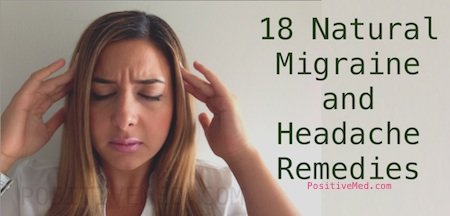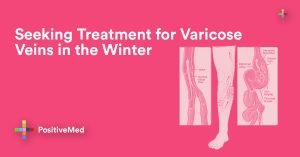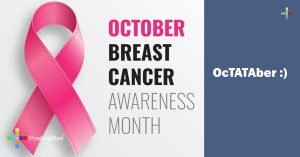18 Natural Migraine Plus Headache Remedies
Not all headaches and migraines are created equally, and unfortunately that makes them hard to identify and pin-point the cause. There are tension headaches, sinus headaches, cluster headaches, migraines and more. I highly suggest doing research and talking with a Neurologist to better understand what type of headache you have and how to properly treat it. Foods that Fight Pain by Dr. Neal Barnard is a great resource and the source for much of this post.
I’ve suffered from most types of headaches from a very young age. I’ve gotten better at identifying triggers, but unfortunately I still get them often. I get auras before my migraines, throbbing sinus headaches, tension headaches, and basically every kind. So, I wanted to share some of the research I’ve done in the hopes that these methods will help someone eliminate a few headaches!
Triggers, or things that set a migraine or headache in motion, can include:
Perfumes
Dental problems
Previous injuries
Cigarette smoke
Changes in weather
Sunlight
Florescent lights
Eye strain (computer screens, uncorrected vision, etc.)
Dehydration
Stress
Too little or too much sleep
Too much caffeine (caffeine withdrawal is more of a dull pain)
Hormone changes (menstrual cycle)
Intense exercise
Environmental chemicals
Cleaning or painting solvents
Formaldahyde
Ammonia
Pesticides
Diesel fuel
Foods + food allergies
Food additives like MSG, food colorings,
Artificial sweeteners (especially Aspartame)
Nitrites (used to cure meats)
Sulfites (preservative)
Tyramine (chemical found in cheese, wine, chocolate, coffee, beer, yeast, licorice, and more)
Some are accompanied with an aura that looks like blind spots in vision and flashing, sparkling lights. Migraines are often hereditary, as well. Unfortunately, both have been my case. I get an aura that starts as a small black spot of missing vision and spreads into lines of sparkling lights. After about 20 minutes the migraine will start to set in. My latest neurologist believes some of my migraines are really tension headaches. Either way, they’re not fun! I get anywhere from 1-10 per month and am usually out of commission for a few hours to a few days.
Food allergies or sensitivities play a big part in migraines and headaches. By eliminating these triggers, many people find relief. You can try a simple elimination diet, or keep a food diary to help determine if a food allergy is your issue. This is something I’m still trying to figure out for myself. I haven’t discovered anything yet, but it’s not always easy.

Common migraine or headache food triggers:
- Dairy products
- Chocolate
- Eggs
- Citrus fruits
- Meat
- Wheat (bread, pasta, etc.)
- Nuts and peanuts
- Tomatoes
- Onions
- Corn
- Apples
- Bananas
- Cheese (especially aged cheeses)
- Wine (especially red wine)
Food allergies or sensitivities play a big part in migraines and headaches. By eliminating these triggers, many people find relief. You can try a simple elimination diet, or keep a food diary to help determine if a food allergy is your issue. This is something I’m still trying to figure out for myself. I haven’t discovered anything yet, but it’s not always easy.
18 Natural Headache Remedies:
1. Coffee
Contains analgesic properties1. The caffeine also expands blood vessels, so medicine will be absorbed more quickly. This is why many medications contain caffeine, such as Tylenol and Excedrin Migraine. “Researchers at the National Headache Foundation say washing it down with a strong 12- ounce cup of coffee will boost the effectiveness of your medication by 40 percent or more. Experts say caffeine stimulates the stomach lining to absorb painkillers more quickly and more effectively.”3
Usage: 1-2 cups at migraine onset. Avoid if it’s triggered migraines in the past.
2. Feverfew
Ancient Greeks used this wild flower herb to reduce fevers. Modern studies show that it reduced migraine pain in 2/3 of the trial patients, which is equivalent to most medicines on the market. 1 It seems to be most effective for people who find relief with a hot compress when experiencing a migraine. “100-150 mg daily of a product standardized to contain at least 0.2 percent parthenolides. This herb helps prevent the release of substances that dilate blood vessels in the head. You can stay on it indefinitely.”4
Usage: 50-114 mg per day
3. Ginger
This root has the ability to block histamines and reduce inflammation. It has been used for centuries to treat neurological conditions. It is also rare to have an allergy or sensitivity to ginger.
Usage: 1/2-1 tsp of powdered ginger per day
4. Magnesium
Studies have shown up to 80% of trial participants benefiting from 200mg of magnesium per day. If you suffer from pre-menstral headaches, magnesium may help significantly.1Usage: 200 mg per day in supplemental form. Look for magnesium citrate or ___, as they are more easily absorbed.
Foods rich in magnesium: whole grains, leafy green vegetables such as spinach, chard, broccoli, figs and some nuts.
5. Calcium + Vitamin D
These are best consumed in their natural states, such as food and sunlight. Calcium rich foods include many dark leafy greens and legumes. When it comes to calcium, the biggest problem in the US has more to do with losing the calcium we do take in. Eating animal products (yes, especially dairy!), eating excessive salt and sugar and smoking all leach calcium from our bones. Your ability to absorb and use this calcium is dependent upon your Vitamin D levels, which many people, especially in climates above Atlanta, are low in.1
Usage for supplements: 1000-2000mg per day of calcium in a highly absorb-able form, such as calcium citrate, and 200 IU of vitamin D.1
6. Relaxing Techniques (for tension headaches)Try lying down in a dark room and breathing deeply. Focus on relaxing all of your muscles, but especially those in your neck, face and head. If you get frequent tension headaches, you’ll need to incorporate more stress management. Frequent exercise, adequate sleep and proper nutrition are very important. 1 You may also want to try epsom salt baths, long walks in nature, meditation, positive thinking and listening to relaxing music.
7. Cherries“Research reveals that anthocyanins, the compounds that give cherries their brilliant red color, are anti-inflammatories 10 times stronger than ibuprofen and aspirin.”3
8. Peppermint essential oilDab a small amount of peppermint essential oil on your temples or under your nose.
9. Massage
Massages
increase blood circulation and relaxation. It can be especially helpful if you suffer from tension headaches.
10. Acupuncture
Like massage, acupuncture
increases blood circulation and promotes relaxation. They can both be highly focused to trouble areas on the body.
11. Butterbur
This herb has been taken for centuries and is thought to have antispasmodic and anti-inflammatory effects. 2 “If you decide to try it, avoid the crude herb, which contains toxic pyrrolizidine alkaloids (PAs). Instead, choose PA-free butterbur extracts standardized to contain a minimum of 7.5 mg of petasin and isopetasin. The adult dosage ranges from 50-100 mg twice daily with meals. Side effects are rare.” 4
I did some research on this and was scared off by what I found. There’s a lot of information about carcinogens (petasin) in the supplements because they aren’t regulated. Research and use with caution. Consult your doctor or neurologist, as well.
12. TurmericThis root is highly anti-inflammatory and great at fighting chronic pain. “Studies show turmeric, a popular East Indian spice, is actually three times more effective at easing pain than aspirin, ibuprofen or naproxen, plus it can help relieve chronic pain for 50 percent of people struggling with arthritis and even fibromyalgia, according to Cornell researchers”3
13. Cold or Hot Compress
Heat can help to loosen the muscles if you’re experiencing a tension headache. Ice can help to numb the pain.
Does anyone remember those Migraine Ice strips? What ever happened to those?

14. ExerciseThis may not help during a headache or migraine, but increasing exercise will help the frequency. Be careful with intense exercise, as that can also trigger a migraine. Exercise increases blood flow, regulates hormones and promotes stress relief.
15. Aromatherapy“Boil a handful of rosemary in a liter of water and place it in a bowl after it boils. Place a towel over your head and inhale the steam for as long as you can. Keep repeating this until the headache goes away. Peppermint, lavender, eucalyptus, sandalwood, and basil work well also.”2
16. Vitamin B2 (Raboflavin)
“Taking high-dose riboflavin (400 mg/day) seems to significantly reduce the number of migraine headache attacks. However, taking riboflavin does not appear to reduce the amount of pain or the amount of time a migraine headache lasts.”5
Usage: 200 mg per day supplement
17. Fish Oil / Omega 3 Fatty Acids
“Omega 3 Fatty Acids are natural anti-inflammatories and may help to reduce the frequency, duration, and severity of migraine headaches.”6
Usage: 1000 mg supplement if you don’t eat fish often.
18. Coenzyme Q10 (CoQ10)
“A handful of studies have shown that CoQ10 reduces the frequency and severity of migraines”6
Usage: 100-200 mg per day supplement









